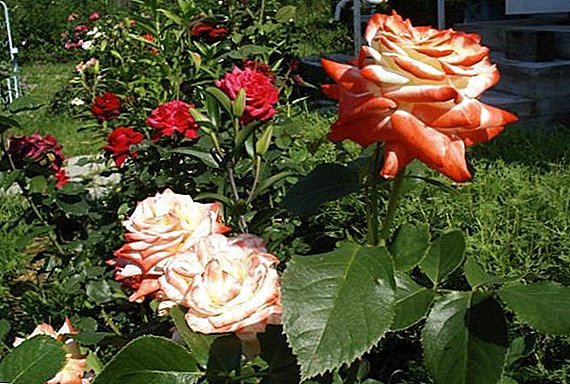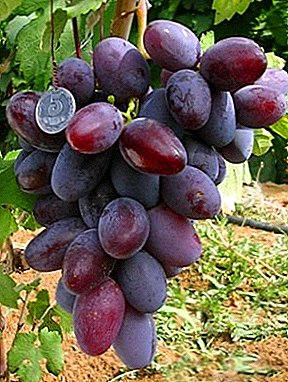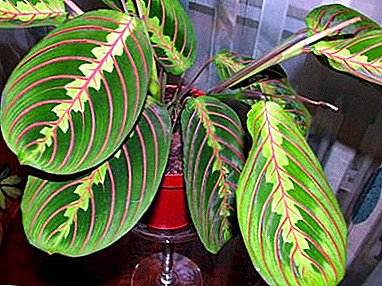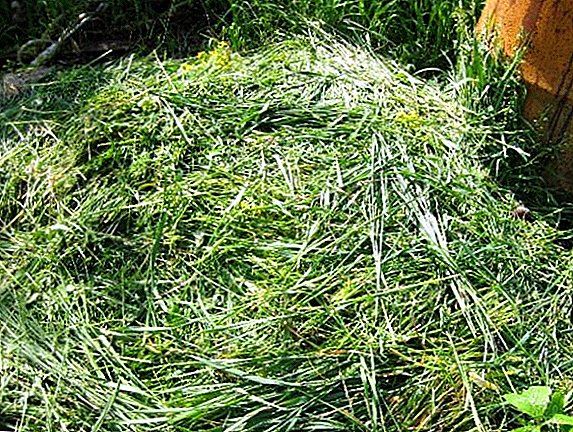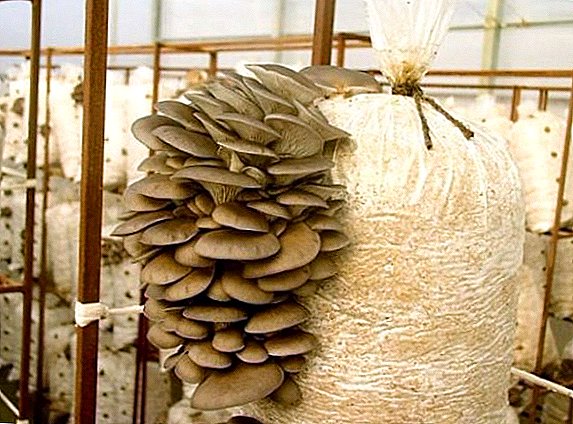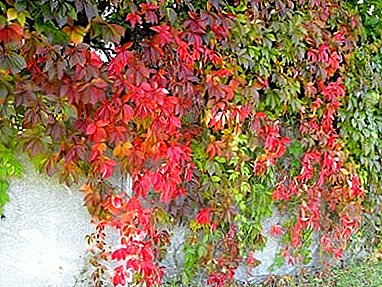
The birthplace of partenocissus is Central China. This plant has about fifteen varieties.
general description
 Partenocissus is a large creeper, which can be used for landscaping facades of buildings, and in the interior.
Partenocissus is a large creeper, which can be used for landscaping facades of buildings, and in the interior.
Curly shoots of this plant can reach fifteen to twenty meters in length rising along the walls or beautifully falling.
It is attached to the wall by disk-shaped suction cups, therefore it does not need additional support.
The flowers of the plant are joined in complex brushes forming peculiar panicles on the tips of branches.
In summer, this handsome shoots are densely covered with shiny five-lobed dark green leaves. With the onset of autumn the foliage becomes bright purple.
On her background clearly stand out clusters of small bluish-black berries, within which is from one to four seeds.
ATTENTION! Parthenocissus berries are inedible.
A photo
Photo Partenocissus or girlish grapes, as it is called by the people:




Home care
Care after purchase
 Seedlings are best purchased in a pot. They must be grown in your country and fed fertilizers of the prolonged action. In this case, the grapes are not dug out and its root system is not exposed to damage, so it is guaranteed to take root after planting.
Seedlings are best purchased in a pot. They must be grown in your country and fed fertilizers of the prolonged action. In this case, the grapes are not dug out and its root system is not exposed to damage, so it is guaranteed to take root after planting.
You can plant girlish grapes purchased in a pot from March to November, and you don’t need to add any additional fertilizer when planting.
And initially you can place your partenocissus on a windowsill, veranda or balcony.
Pruning
Every spring, partenocissus, from a young age, needs to be rejuvenated pruning.
Thanks to this procedure, you will have material for planting and breeding. Pruning is to remove weak and withered shoots and the direction of the young shoots in the right direction.
IMPORTANT! If you neglect pruning, the dry shoots over the years will accumulate and form a dense and ugly dried net under the young shoots.
Watering
Girlish grapes does not need regular watering. During the season you can water it only three or four times, using about ten liters of water for each adult plant.
If it's hot outside, water the grapes more often, preventing the soil from drying out.
Landing
If you plan to grow it in the open ground first dig a hole, the size of which will correspond to the size of the cutting. Mix the soil obtained by digging with sand and compost, as well as two handfuls of complex fertilizer.
At the bottom of the pit, you need to put a layer of drainage, the role of which can play shards of brick, coarse sand or gravel. Drainage pour part of the soil mixture.
Then tilt the stalk slightly and place it in the hole, then pour the remaining earth. Do not forget to form a well for irrigation, in which precipitation will linger.
After planting, be sure to water the plant. Make a support for him or tie a wire to make it easier for him to climb up.
 Girlish grapes make no special demands on the soil, but it’s best to feel in fertile soil that easily passes moisture.
Girlish grapes make no special demands on the soil, but it’s best to feel in fertile soil that easily passes moisture.
When planting partenocissus in the pot, choose a pot with a hole at the bottom. You can make a soil mix yourself.
To do this, you will need to mix one part of sod land with one part of humus soil, as well as half of pearlite or coarse sand.
Transfer
To transplant parthenocissus negative attitude but for the first two years of his life he needs it because of its rapid growth. Replant this plant to spring.
If you grow grapes in a pot, then it should be replaced every year until the diameter of the pot reaches thirty centimeters.
After that, it will be enough to only change the three-centimeter top layer of earth in the pot.
Temperature
In summer, the most optimal temperature for partenocissus is that which ranges from eighteen to twenty one degrees of heat. In winter it needs coolness therefore, it must be maintained at a temperature of from twelve to sixteen degrees above zero.
Lighting
Girlish grapes are very loves bright ambient light. Indoors, it will be best to feel on the east and west window. The plant can be located in the penumbra, but you should remember that adequate lighting will contribute to its rapid growth.
Breeding
Seeds
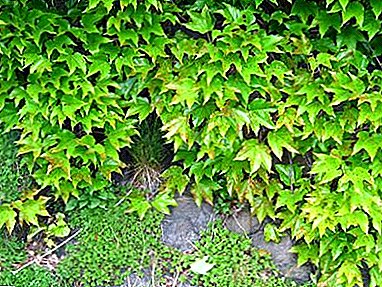 Seeds can be planted in spring or autumn.
Seeds can be planted in spring or autumn.
Before the autumn planting they need soak in water for three or four days, and before the spring - put in the cold for thirty days.
The depth at which the seeds are immersed in the soil should be at least one centimeter.
The best time for planting obtained seedlings in open ground is the period from May to June.
Cuttings
The cuttings used for breeding should be cut in autumn or spring. To do this, you should choose thick, but not very old branches, each of which must have at least four healthy buds.
Cuttings are planted in the ground to above the ground were two buds, and the rest were underground, and periodically watered, maintaining a constant soil moisture.
Soon they will overgrow with young shoots.
Layering
To obtain the layering it is necessary to bend one of the vine vines to the ground and sprinkle with soil. When rooting occurs in this place, you can transplant the young plant to a more suitable place.
Benefit and harm
Application
Girlish grapes can be used not only in ornamental, but also for medicinal purposes. Chinese doctors have long noticed that a decoction of the branches of this plant has hemostatic properties, and also helps dissolve tumors.
Partenocissus also benefits from a practical point of view. The walls covered with its vines are less exposed to sunlight, rain and wind, as well as dust and excessive dampness.
Harm
Getting under tile or slate, shoots are able to destroy them.
Shoots located close to the gutters can get inside the pipes, causing them to clog.
Curving the window, the vines deprive the room of access to sunlight.
The root system, stretching under the ground for several meters, can damage the plants located in the neighborhood.
If the grapes grow near the plastered wall, it can cause damage to the plaster.
Diseases and pests
 Partenocissus is characterized by a high resistance to diseases and pests, but in some cases it can be affected by spider mites, scales, and mealybugs.
Partenocissus is characterized by a high resistance to diseases and pests, but in some cases it can be affected by spider mites, scales, and mealybugs.
If this happened, cut off all the shoots leaving only twenty centimeters from their length, and then treat the plant with fungicides.
If girlish grapes grow in a poorly ventilated and damp room, a fungus can strike its leaves.
Sunburns cause bright spots on them.
Well, the slow growth of the plant, the absence of its flowering, which usually occurs in July-August, and the pale color of the leaves, may indicate a lack of lighting and nutrients.
- Spectacular liana with large leaves - Rafidofora.
- Indoor grapes Cissus.
- Birch (Roitsissus): care at home, the benefits and harm of indoor flower.
- Ruellia.
- Money plant (Potos).
- Wonderful vine Tunbergia.
- The unique fast-growing plant Philodendron.
- Magnificent perennial Tseropegiya Sanderson.
- Decorative flowers Eschanantus.
- Evaluation
Conclusion
If, after weighing all the advantages and disadvantages of parthenocissus, you still decide to plant it, it will provide you elegant garden decoration for many years.





